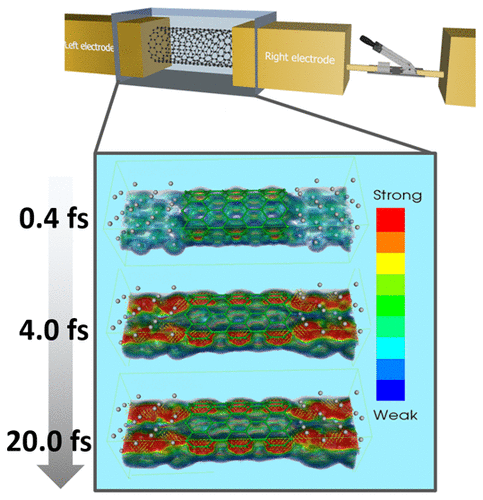当前位置:
X-MOL 学术
›
Acc. Chem. Res.
›
论文详情
Our official English website, www.x-mol.net, welcomes your
feedback! (Note: you will need to create a separate account there.)
Time-Dependent Density Functional Theory for Open Systems and Its Applications
Accounts of Chemical Research ( IF 16.4 ) Pub Date : 2018-01-19 00:00:00 , DOI: 10.1021/acs.accounts.7b00382 Shuguang Chen 1 , YanHo Kwok 1 , GuanHua Chen 1
Accounts of Chemical Research ( IF 16.4 ) Pub Date : 2018-01-19 00:00:00 , DOI: 10.1021/acs.accounts.7b00382 Shuguang Chen 1 , YanHo Kwok 1 , GuanHua Chen 1
Affiliation

|
Photovoltaic devices, electrochemical cells, catalysis processes, light emitting diodes, scanning tunneling microscopes, molecular electronics, and related devices have one thing in common: open quantum systems where energy and matter are not conserved. Traditionally quantum chemistry is confined to isolated and closed systems, while quantum dissipation theory studies open quantum systems. The key quantity in quantum dissipation theory is the reduced system density matrix. As the reduced system density matrix is an O(M! × M!) matrix, where M is the number of the particles of the system of interest, quantum dissipation theory can only be employed to simulate systems of a few particles or degrees of freedom. It is thus important to combine quantum chemistry and quantum dissipation theory so that realistic open quantum systems can be simulated from first-principles.
中文翻译:

开放系统的时变密度泛函理论及其应用
光伏器件,电化学电池,催化过程,发光二极管,扫描隧道显微镜,分子电子学以及相关器件具有一个共同点:不守恒能量和物质的开放量子系统。传统上,量子化学仅限于隔离和封闭的系统,而量子耗散理论则研究开放的量子系统。量子耗散理论中的关键量是简化的系统密度矩阵。由于缩减的系统密度矩阵是O(M!× M!)矩阵,其中M如果是目标系统的粒子数,则量子耗散理论只能用于模拟少数粒子或自由度的系统。因此,重要的是将量子化学和量子耗散理论相结合,以便可以从第一性原理模拟现实的开放量子系统。
更新日期:2018-01-19
中文翻译:

开放系统的时变密度泛函理论及其应用
光伏器件,电化学电池,催化过程,发光二极管,扫描隧道显微镜,分子电子学以及相关器件具有一个共同点:不守恒能量和物质的开放量子系统。传统上,量子化学仅限于隔离和封闭的系统,而量子耗散理论则研究开放的量子系统。量子耗散理论中的关键量是简化的系统密度矩阵。由于缩减的系统密度矩阵是O(M!× M!)矩阵,其中M如果是目标系统的粒子数,则量子耗散理论只能用于模拟少数粒子或自由度的系统。因此,重要的是将量子化学和量子耗散理论相结合,以便可以从第一性原理模拟现实的开放量子系统。











































 京公网安备 11010802027423号
京公网安备 11010802027423号